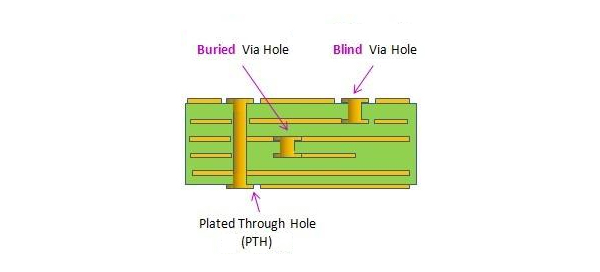3 PCB Drilling Methods
The circuit board made of by a layer of copper foil circuits stacked on top of each other. The connection between different circuit layers depends on the PCB drill hole. Because in the manufacture of circuit boards, drilling holes are used to communicate with different circuit layers. The purpose is to conduct electricity, so they are called PCB plating through holes. In order to conduct electricity, a layer of conductive material (usually copper) must be plated on the surface of the drilled hole, so that the electrons can move between different copper foil layers.
In general, there are three types of PCB drilling, which are described as follows:


Plating Through Hole, referred to as PTH
This is the most common type of PCB plating through hole. As long as the circuit board is kept under the light, the hole where you an see the bright light is the via hole. This is also the simplest type of PCB plating through hole, because when making a circuit board, you only need to drill the circuit board directly with a drill or a laser to fully drill the circuit board, and the cost is relatively cheap. Although through holes are cheap, sometimes they take up more space on the board.
Blind Via Hole, referred to as BVH.
A blind via is a plating through hole that connects the surface and inner layers without penetrating the entire board. In order to increase the space utilization of the PCB circuit layer, a blind via process has been created. In this manufacturing method, special attention needs to be paid to the depth of the drilled holes. The manufacture of such blind holes requires precise positioning and precise alignment devices. You can drill the holes before connecting the circuit layers that need to be connected to individual circuit layers in advance, and then stick them together.
Buried Via Hole, also referred to as BVH
It is a connection to any circuit layer inside the PCB but does not conduct to the outer layer. This process cannot be achieved by drilling after bonding. Therefore, the holes must be drilled at the individual circuit layer, and the inner layer must be locally bonded, and then electroplated before being fully bonded. This is more laborious than the original through hole and blind via, so the price is also the most expensive. This process is usually only used for high-density interconnect circuit boards to increase the usable space of other circuit layers.
评论
发表评论